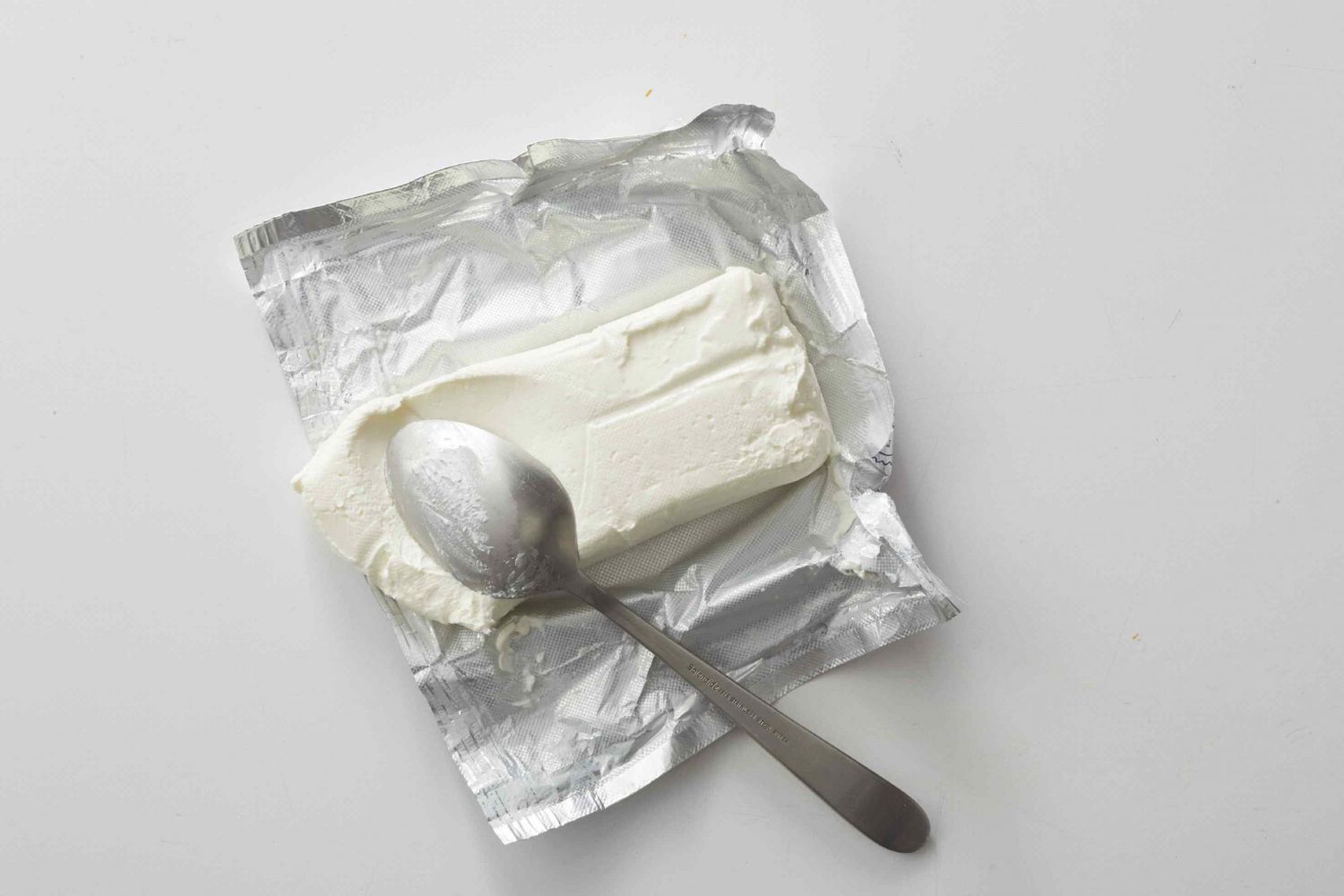

Articles
How To Store Feta Cheese Once Opened
Modified: December 7, 2023
Learn the best practices for storing feta cheese after opening with our informative articles. Preserve its freshness and flavor for longer periods.
(Many of the links in this article redirect to a specific reviewed product. Your purchase of these products through affiliate links helps to generate commission for Storables.com, at no extra cost. Learn more)
Introduction
Feta cheese is a delicious and versatile cheese that adds a distinct tangy flavor to a variety of dishes. Whether crumbled over salads, melted into a savory dish, or enjoyed on its own, feta cheese is a popular choice for cheese lovers. However, once opened, feta cheese requires proper storage to maintain its freshness, texture, and flavor.
Improper storage can lead to spoilage, loss of flavor, and potential health risks. Therefore, it is essential to understand the importance of storing opened feta cheese correctly and to follow the necessary steps to ensure its longevity.
In this article, we will explore why proper storage is crucial for opened feta cheese and provide you with a comprehensive guide on how to store it to maintain its quality and taste. We will also share some tips to help you prolong the shelf life of opened feta cheese and avoid unnecessary waste.
Key Takeaways:
- Proper storage of opened feta cheese is crucial to preserve its freshness, texture, and flavor, while also reducing food waste and safeguarding your health.
- Whether stored in brine, olive oil, or vacuum-sealed bags, following the recommended guidelines and tips will help prolong the shelf life of opened feta cheese and ensure its delicious taste in your culinary creations.
Read more: How To Store Mozzarella Cheese Once Opened
Why Proper Storage is Important for Opened Feta Cheese
Proper storage of opened feta cheese is essential to maintain its freshness and prevent spoilage. Here are a few reasons why proper storage is important for opened feta cheese:
- Preserves Freshness: Feta cheese is a dairy product, and like any other dairy product, it is prone to spoilage. Proper storage helps to preserve its freshness and prevent the growth of bacteria, mold, and other harmful microorganisms.
- Maintains Texture: Feta cheese has a unique crumbly texture that adds a delightful contrast to dishes. Incorrect storage can cause the cheese to become watery, mushy, or grainy, compromising its texture and overall enjoyment.
- Retains Flavor: Feta cheese has a tangy and salty flavor that is loved by many. However, exposure to air and improper storage can lead to flavor loss, making the cheese taste bland or off. Proper storage helps to retain the delicious flavor of feta cheese.
- Reduces Waste: Properly storing opened feta cheese extends its shelf life, allowing you to enjoy it for a longer period. This helps to reduce food waste and saves you money by avoiding the need to discard spoiled cheese.
- Protects Health: Mold or bacterial growth on feta cheese can pose a health risk if consumed. By storing feta cheese properly, you can minimize the chances of bacterial contamination and safeguard your health.
By recognizing the importance of proper storage, you can ensure that your opened feta cheese remains safe to eat, retains its quality, and delivers the taste and texture you expect.
Step-by-step Guide: How to Store Opened Feta Cheese
Proper storage is key to maintaining the freshness and quality of opened feta cheese. Here is a step-by-step guide on how to store opened feta cheese:
- Remove the Feta Cheese from its Original Packaging: Once you open the packaging of feta cheese, transfer it to a clean, airtight container. This helps to protect the cheese from exposure to air and moisture.
- Choose a Suitable Storage Option: There are a few different options for storing opened feta cheese:
- Storage in Brine Solution: Place the feta cheese in a container and cover it with the brine solution. The brine helps to maintain the cheese’s moisture and flavor. Ensure that the cheese is fully submerged in the brine.
- Storage in Olive Oil: If you prefer a different flavor profile, you can store the feta cheese in a jar filled with olive oil. The oil helps to create a protective barrier and keeps the cheese moist.
- Storage in Vacuum-Sealed Bags: Another option is to store the feta cheese in vacuum-sealed bags. This method removes the air around the cheese, preventing oxidation and maintaining its freshness.
- Label and Date the Container: It is important to label the container with the date of storage. This allows you to keep track of how long the feta cheese has been stored and helps you to prioritize consumption based on freshness.
- Store in the Refrigerator: Place the sealed container of feta cheese in the refrigerator. The optimal temperature for feta cheese storage is between 35°F (2°C) and 40°F (4°C). Make sure the refrigerator is clean and free from strong odors that could affect the taste of the cheese.
- Rotate and Consume: Feta cheese can typically stay fresh for up to a few weeks when properly stored. Remember to rotate the container occasionally to evenly distribute the brine or oil. Consume the cheese within the recommended storage time for the best flavor and quality.
Following these steps will help you store opened feta cheese properly and prolong its shelf life, ensuring that it remains fresh, flavorful, and ready to enhance your culinary creations.
Option 1: Storage in Brine Solution
Storing opened feta cheese in a brine solution is a common and effective method to maintain its texture and flavor. Here’s how you can store your feta cheese in a brine solution:
- Prepare the Brine Solution: In a clean container, mix water and salt to create a brine solution. The general ratio is 1 cup of salt to 4 cups of water, but you can adjust the ratio to your taste preferences.
- Cut the Feta Cheese into Portions: If you have a large block of feta cheese, consider cutting it into smaller portions. This allows for easier handling and ensures each piece is adequately covered by the brine solution.
- Place the Feta Cheese in the Container: Submerge the feta cheese pieces in the brine solution. Ensure that all the cheese pieces are fully covered by the solution. If needed, add additional brine solution to cover the cheese completely.
- Seal the Container: Close the container tightly to create a secure and airtight seal. This prevents air from entering and maintains the integrity of the brine solution.
- Label and Date the Container: It’s important to label the container with the date of storage. This helps you keep track of the freshness and consumption timeline of the feta cheese.
- Refrigerate the Container: Place the sealed container in the refrigerator and ensure it is stored in a section away from strong-smelling foods to prevent flavor transfer. The cool temperature of the fridge will help preserve the freshness and quality of the feta cheese.
- Rotate the Container: Every few days, gently shake or rotate the container to redistribute the brine solution and ensure each piece of cheese is evenly soaked.
- Enjoy the Stored Feta Cheese: Stored in the brine solution, your feta cheese will remain fresh for several weeks. When ready to use, remove the desired portion from the brine and rinse it briefly to remove excess salt before incorporating it into your culinary creations.
Storing feta cheese in a brine solution helps to retain its moisture, tangy flavor, and crumbly texture. By following these steps, you can ensure that your feta cheese remains in optimal condition for an extended period.
Store opened feta cheese in a container filled with brine or milk to keep it moist and prevent it from drying out. Keep it refrigerated and change the liquid every few days to maintain freshness.
Option 2: Storage in Olive Oil
If you prefer a different flavor profile or want to add an extra layer of richness to your feta cheese, storing it in olive oil is a fantastic option. Here’s a step-by-step guide on how to store opened feta cheese in olive oil:
- Choose a Suitable Container: Select a clean, airtight container that can accommodate the feta cheese and enough olive oil to fully submerge it. Glass jars with a tight-fitting lid work well for this purpose.
- Cut the Feta Cheese into Portions: If necessary, cut the feta cheese into smaller portions for easier handling and storage.
- Place the Feta Cheese in the Container: Carefully arrange the feta cheese pieces in the container, ensuring they fit snugly and do not overlap.
- Drizzle Olive Oil Over the Feta Cheese: Pour enough olive oil into the container to fully cover the feta cheese pieces. The olive oil creates a protective barrier that helps prevent air exposure and maintains the cheese’s moisture.
- Seal the Container Tightly: Ensure the container is tightly sealed to prevent any air from entering and oxidizing the feta cheese. This helps to preserve the quality and flavor of the cheese.
- Label and Date the Container: It’s important to label the container with the date of storage. This allows you to keep track of the freshness and consumption timeline of the feta cheese.
- Store in the Refrigerator: Place the sealed container of feta cheese in the refrigerator. The cool temperature of the fridge will help maintain the integrity of the olive oil and keep the cheese fresh.
- Rotate the Container: Every few days, gently shake or rotate the container to ensure that all the feta cheese pieces are evenly coated with the olive oil.
- Enjoy the Stored Feta Cheese: Storing feta cheese in olive oil allows it to stay fresh and flavorful for a longer time. When ready to use, remove the desired amount of cheese from the olive oil, allowing any excess oil to drain off before incorporating it into your dishes.
Storing feta cheese in olive oil adds a rich and unique flavor to the cheese, making it a delightful addition to salads, sandwiches, or enjoyed on its own. Just make sure to use a high-quality olive oil for the best results.
Read more: How To Store Feta Cheese
Option 3: Storage in Vacuum-Sealed Bags
Storing opened feta cheese in vacuum-sealed bags is an excellent option for maximizing its shelf life and maintaining its freshness. Here’s a step-by-step guide on how to store opened feta cheese using this method:
- Cut the Feta Cheese into Portions: If needed, cut the feta cheese into smaller portions for easy handling and storage.
- Prepare the Vacuum-Sealed Bags: Get vacuum-sealed bags that are suitable for food storage. Ensure they are clean and free from any moisture before use.
- Place the Feta Cheese in the Bags: Put the feta cheese portions into separate vacuum-sealed bags. Leave enough space at the opening of the bag to create a proper seal.
- Remove Air from the Bags: Use a vacuum sealer to remove the air from the bags. Follow the manufacturer’s instructions for your specific vacuum sealer. By removing the air, you minimize the chance of oxidation and maintain the freshness of the feta cheese.
- Seal the Bags: Once the air has been sucked out, seal the bags tightly. Ensure a secure and airtight seal to prevent any air or bacteria from entering the bags.
- Label and Date the Bags: It’s essential to label each vacuum-sealed bag with the date of storage. This helps you keep track of the freshness and consumption timeline of each portion of feta cheese.
- Refrigerate the Bags: Place the sealed bags of feta cheese in the refrigerator. The cool temperature will help maintain the quality and freshness of the cheese.
- Rotate the Bags: Every so often, gently rotate or rearrange the bags to ensure even distribution of temperature and to prevent any condensation build-up.
- Enjoy the Stored Feta Cheese: Storing feta cheese in vacuum-sealed bags can extend its shelf life by several weeks. When ready to use, open a bag, remove the desired amount of feta cheese, and reseal the remaining portion for continued freshness.
Using vacuum-sealed bags helps to eliminate air and minimize oxidation, allowing the feta cheese to stay fresh and flavorful for an extended period. This method is not only convenient but also aids in reducing food waste by preserving the cheese for longer periods.
Tips for Prolonging the Shelf Life of Opened Feta Cheese
To maximize the shelf life of opened feta cheese and ensure its freshness and quality, follow these helpful tips:
- Keep the Cheese Refrigerated: Feta cheese, whether stored in brine, olive oil, or vacuum-sealed bags, should always be kept in the refrigerator. The cool temperature helps slow down the growth of bacteria and preserve the cheese’s integrity.
- Avoid Exposing the Cheese to Air: Preventing exposure to air is crucial in preventing the cheese from drying out or becoming contaminated. Whether it’s storing in brine or olive oil, ensure the feta cheese is fully submerged or sealed tightly to limit air contact.
- Use Clean Utensils: When handling the feta cheese, always use clean utensils to avoid introducing bacteria or contaminants.
- Store Away from Strong Odors: Feta cheese absorbs odors easily, so store it away from pungent foods like onions or garlic to prevent flavor transfer.
- Consume the Oldest Cheese First: If you have multiple portions or containers of feta cheese, prioritize consuming the older ones first to ensure you enjoy the freshest cheese.
- Check for Signs of Spoilage: Regularly inspect the feta cheese for any signs of mold, sliminess, or off odors. If you notice any of these signs, discard the cheese immediately.
- Properly Seal the Cheese After Each Use: After removing the desired amount of feta cheese from storage, make sure to reseal the container or vacuum-sealed bag properly to maintain the quality of the remaining cheese.
- Consider Freezing: If you have a large quantity of feta cheese and cannot consume it all within the recommended storage time, consider freezing the cheese. Wrap it tightly in plastic wrap or place it in a freezer-safe container to prevent freezer burn.
- Thaw Feta Cheese Properly: When thawing frozen feta cheese, transfer it to the refrigerator and allow it to defrost slowly. Avoid thawing at room temperature to prevent rapid bacteria growth.
- Trust Your Senses: While feta cheese has a typical tangy aroma, if it smells significantly different or has an unappealing odor, it’s best to discard it.
By following these tips, you can prolong the shelf life of your opened feta cheese, reduce food waste, and ensure that you always have fresh and delicious cheese for your favorite recipes.
Conclusion
Proper storage of opened feta cheese is essential to maintain its freshness, flavor, and texture. Whether you choose to store it in brine, olive oil, or vacuum-sealed bags, the key is to protect the cheese from exposure to air and moisture. By following the step-by-step guidelines provided in this article, you can prolong the shelf life of your opened feta cheese and avoid unnecessary waste.
Storing feta cheese in brine helps to preserve its tangy flavor and crumbly texture, while storage in olive oil adds a rich and unique taste profile. Vacuum-sealing the cheese removes air and maintains its freshness for an extended period. Each method offers its own advantages, so choose the one that suits your preferences and culinary needs.
Remember to label and date your containers to keep track of the storage time and enjoy the oldest cheese first. Keep the cheese refrigerated, away from strong odors, and always use clean utensils when handling it. Regularly inspect the cheese for signs of spoilage and properly seal it after each use to maintain its quality.
Prolonging the shelf life of opened feta cheese not only ensures that you have fresh cheese on hand but also helps reduce food waste. By following the tips provided, you can enjoy the tangy, delicious flavors of feta cheese in your favorite dishes for an extended period.
So, the next time you open a package of feta cheese, don’t forget to store it properly and savor its delightful taste in your culinary creations.
Frequently Asked Questions about How To Store Feta Cheese Once Opened
Was this page helpful?
At Storables.com, we guarantee accurate and reliable information. Our content, validated by Expert Board Contributors, is crafted following stringent Editorial Policies. We're committed to providing you with well-researched, expert-backed insights for all your informational needs.















0 thoughts on “How To Store Feta Cheese Once Opened”